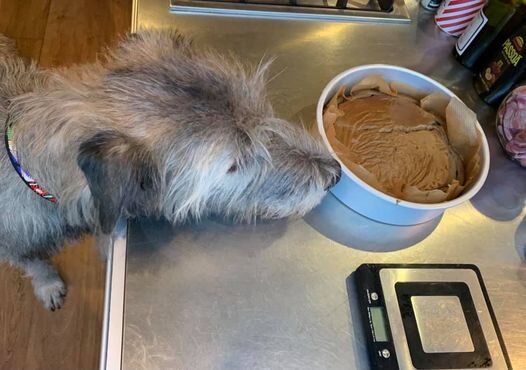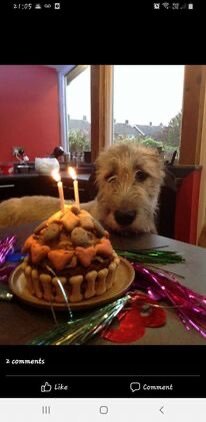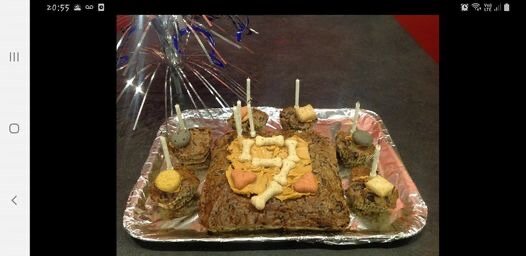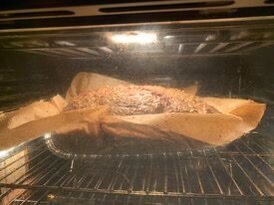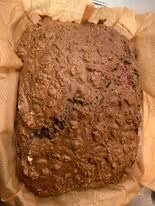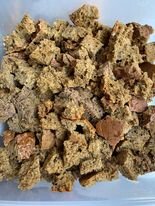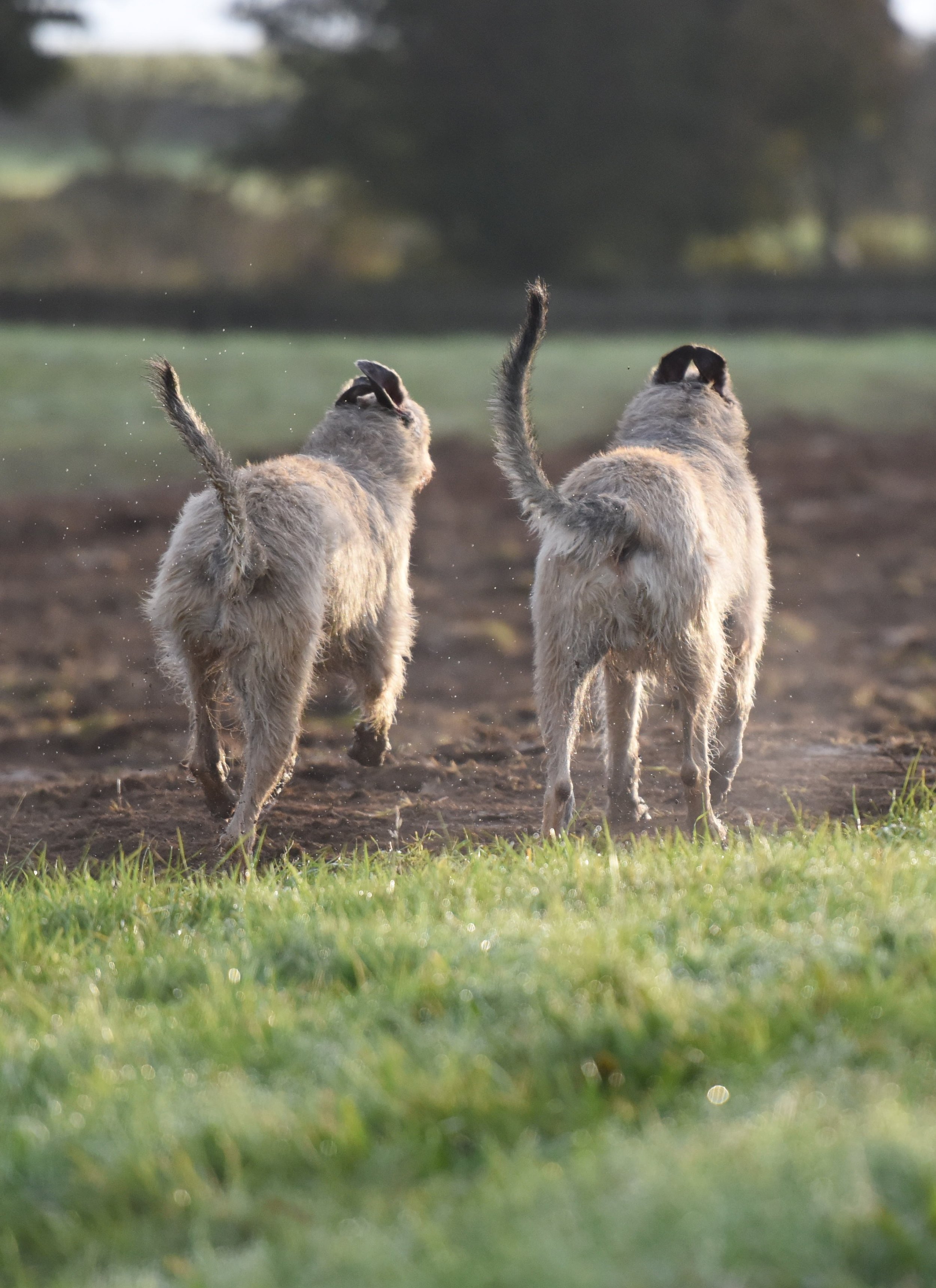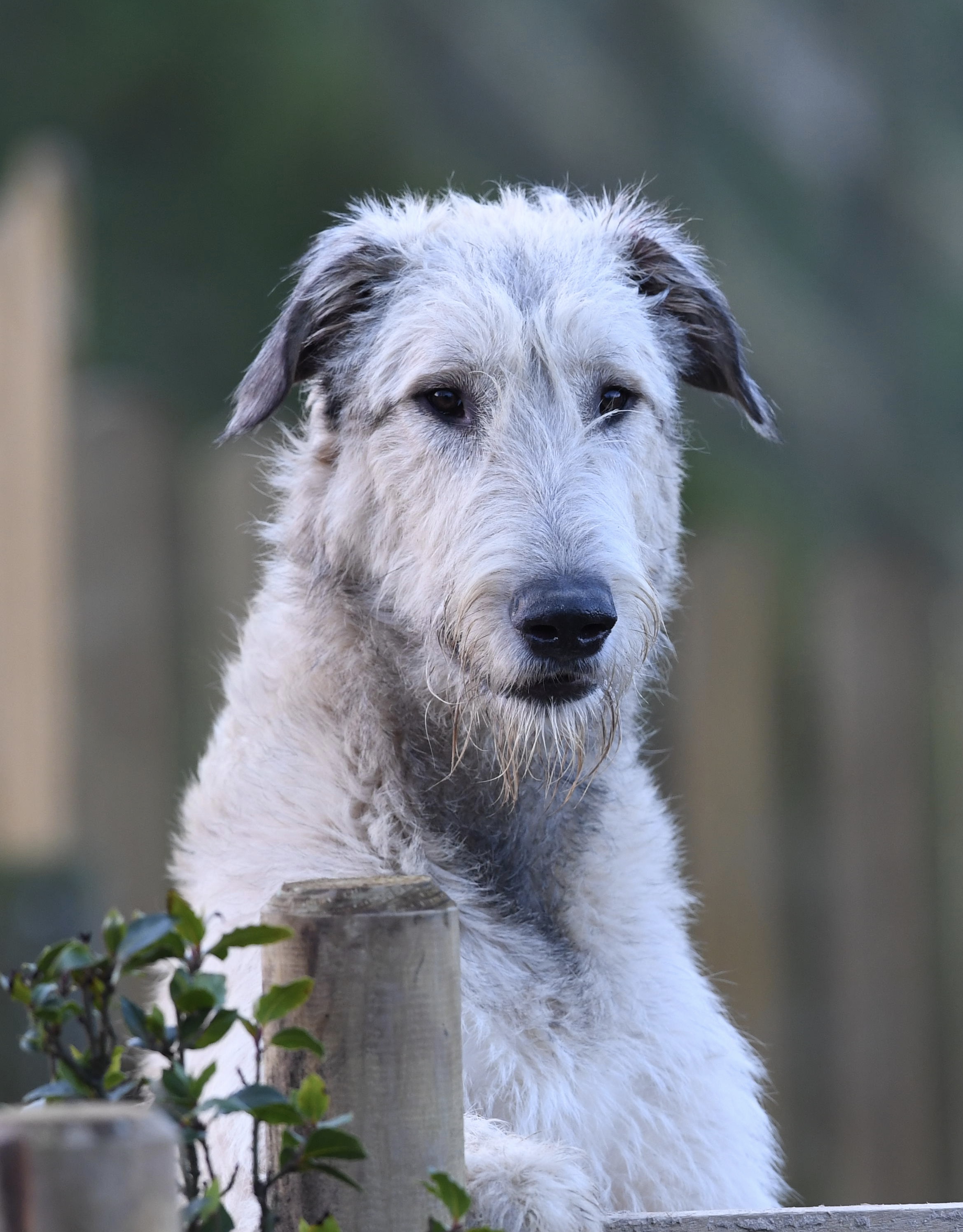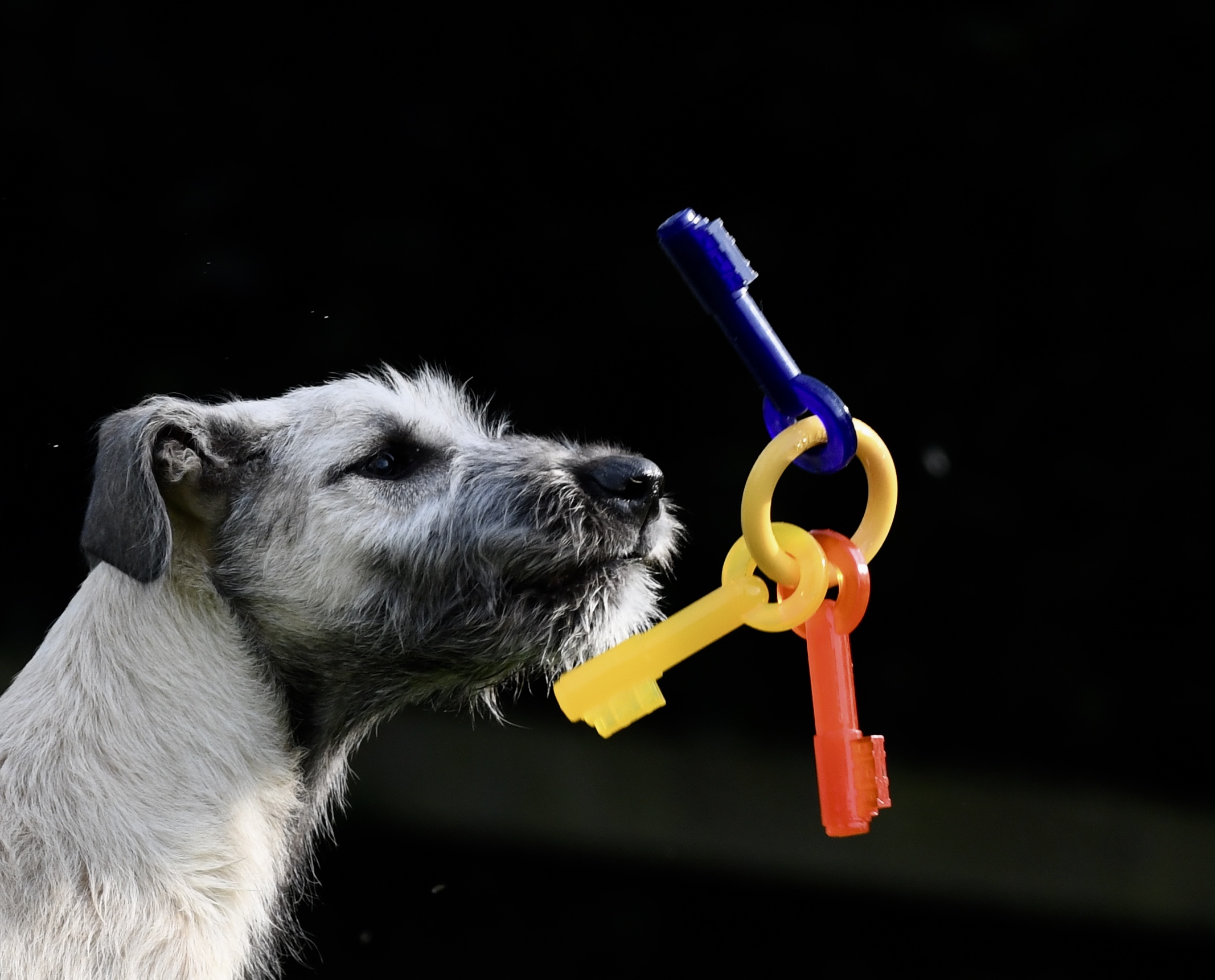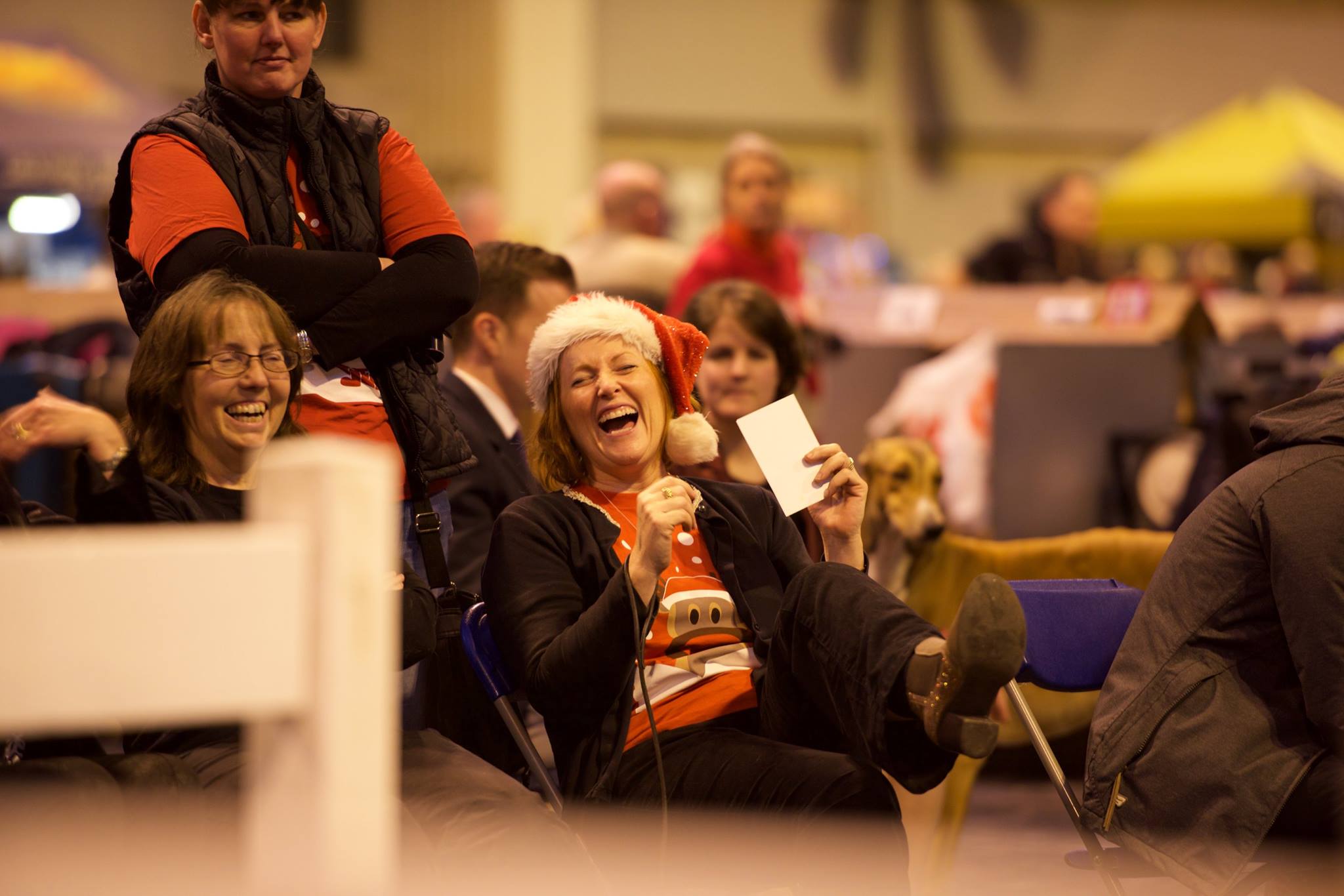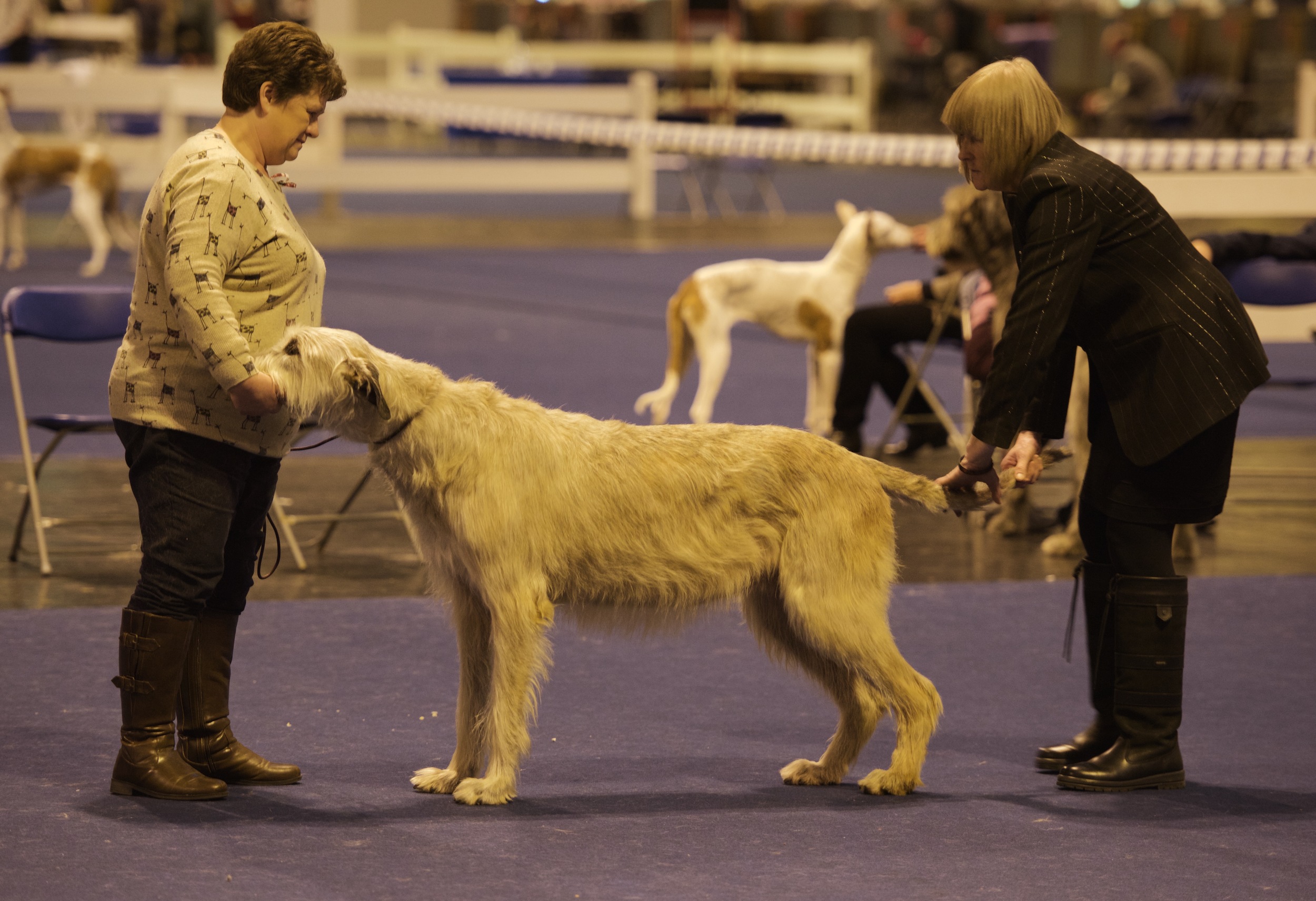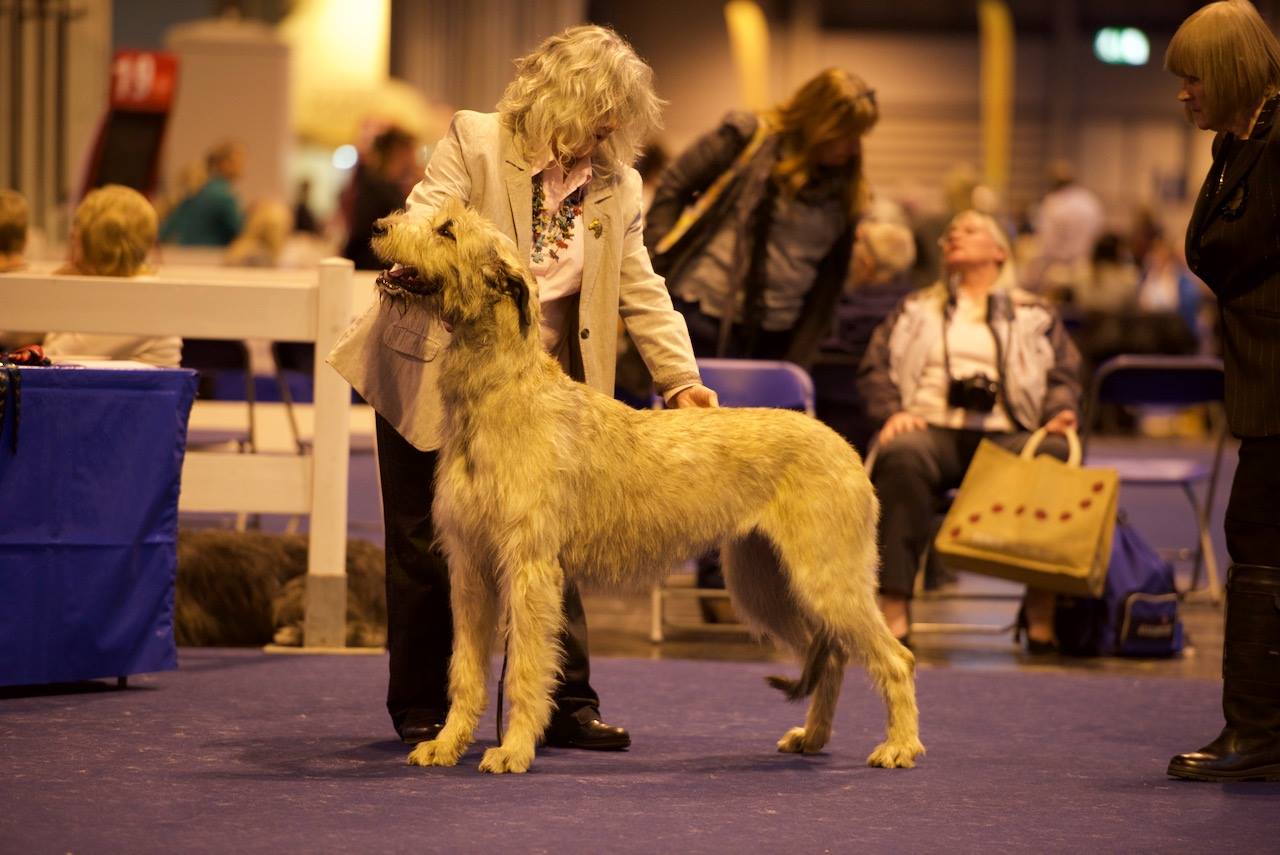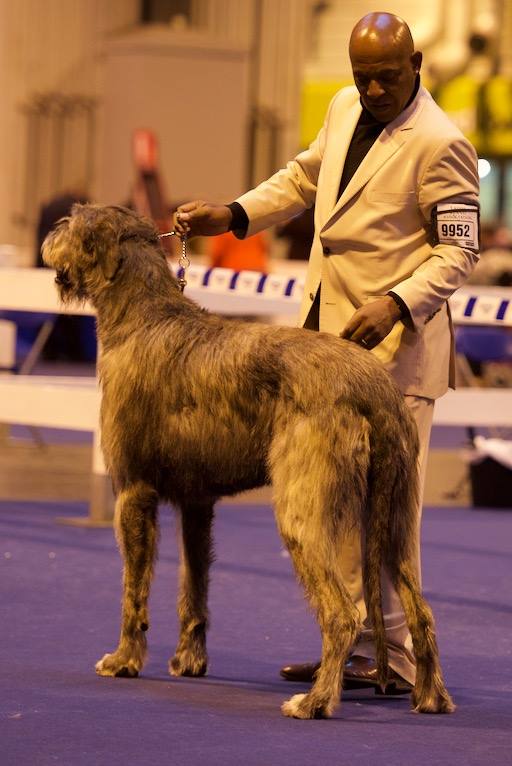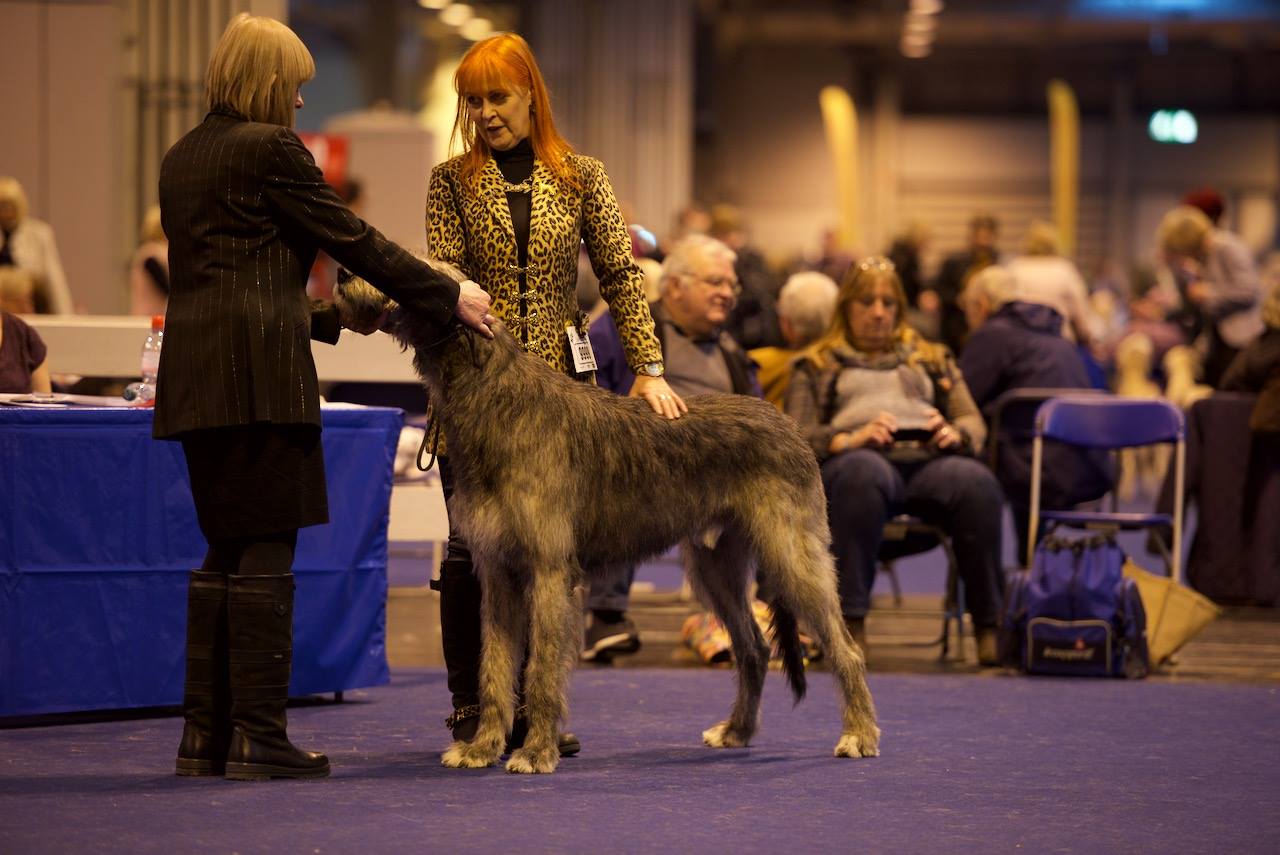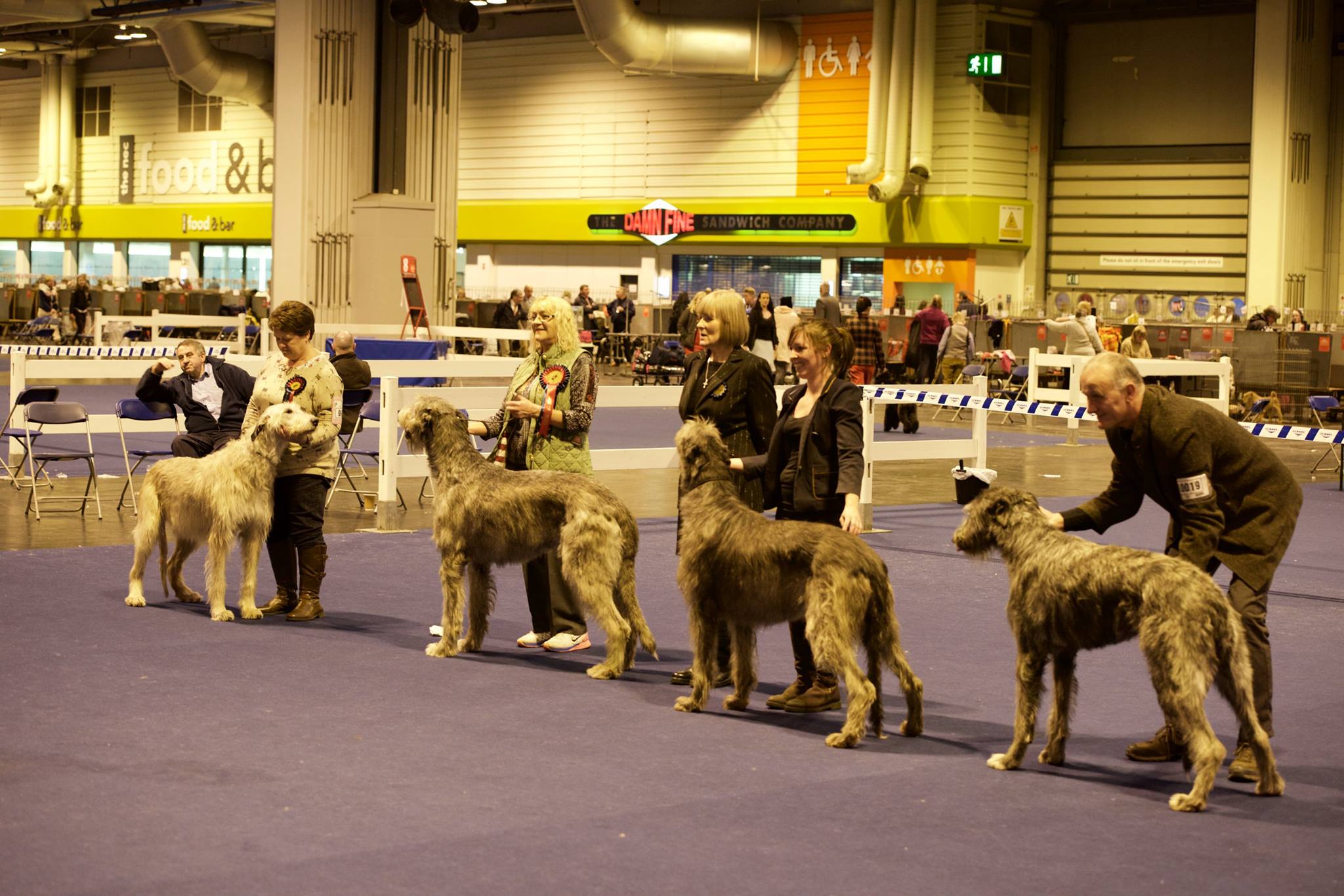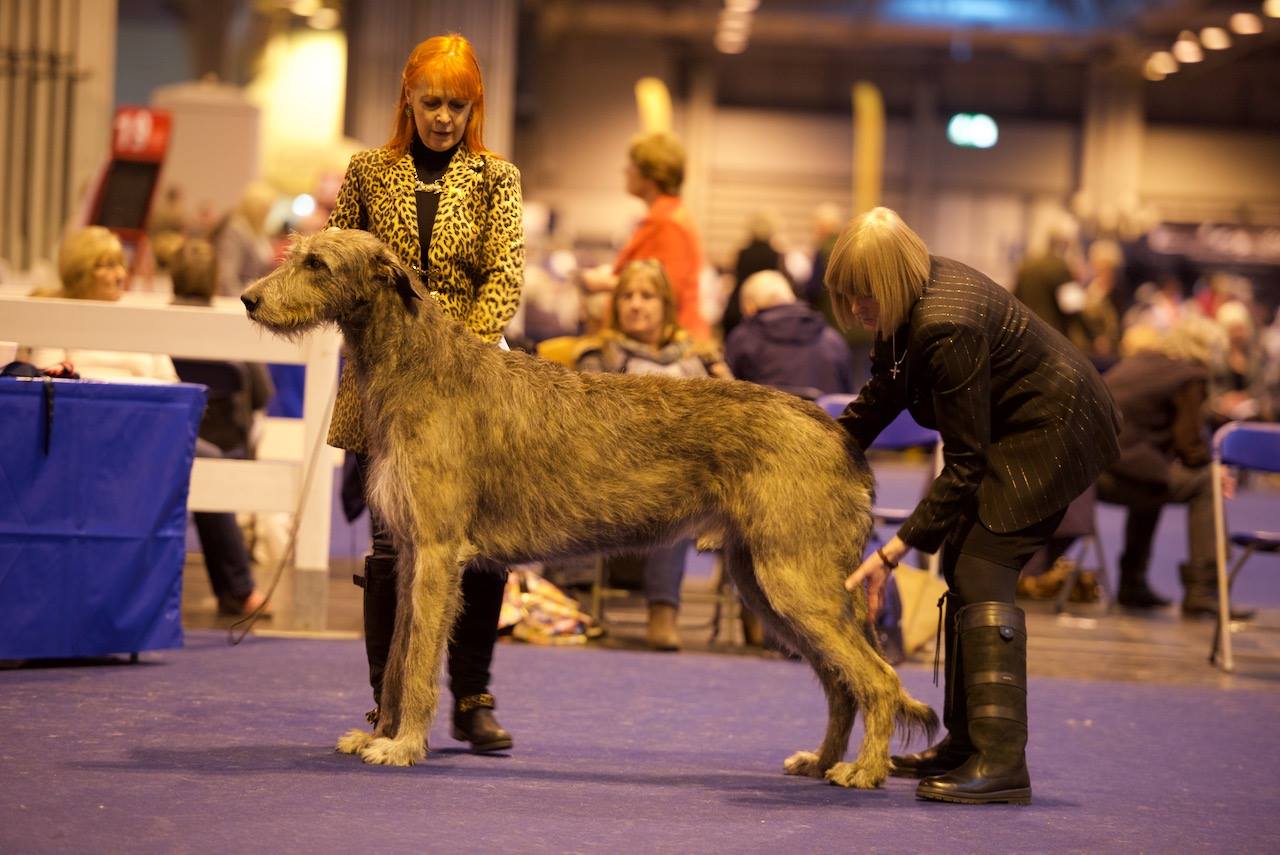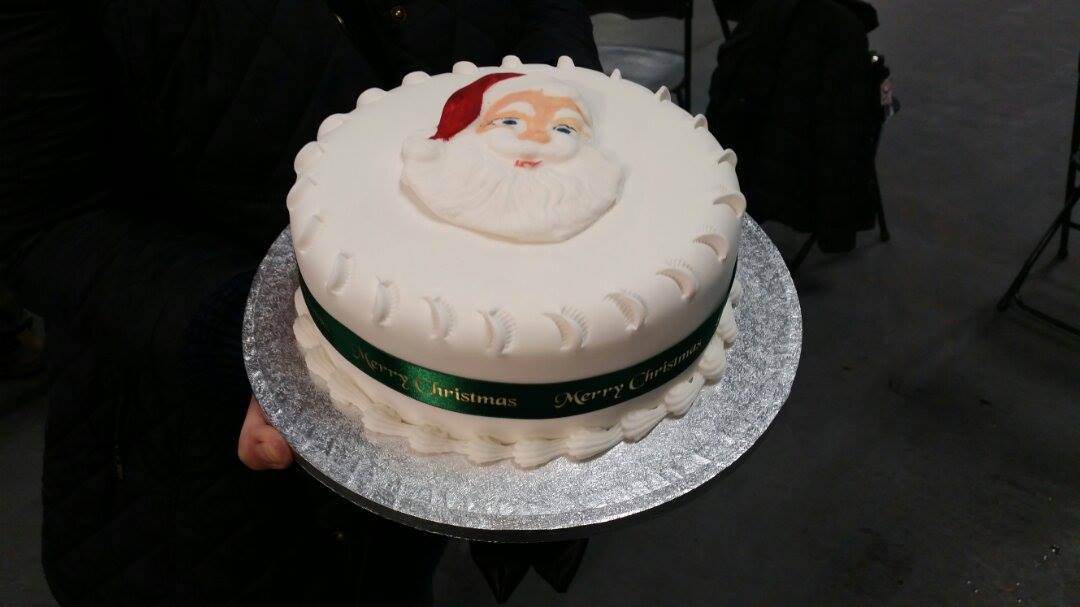written by Laura Lewin.
As many of you have already seen, the Bonaforte hounds have a great life at the farm but we like to think that they can retire to a comfy sofa and plenty of attention when the time is right. In recent months, we have fostered quite a few of our hounds out to the wonderful Bonaforte community with some great successes and a few matches that didn’t work out. Even for ourselves, it is hard to predict which dogs will settle with ease and which will require extra support. Some can settle within days and feel like they’ve been a part of the family forever, whereas others may really struggle to adjust to their new way of life and new surroundings.
Fostering an adult is more difficult in many ways than rearing a pup. Our adult hounds are well adjusted to farm life but may have very little experience of ‘home life’. Let’s face it, sharing a room with a few adults is a vast difference to sharing a room with a bunch of hounds squabbling over who gets to the food first or who is in charge today. Much like with our own retirement, it is a bit of a jump into the deep end from living a busy life surrounded by peers to living a slower paced, relaxed life with plenty of space, peace and affection. It is different for all hounds and there is no shame in struggling with a dog. All of us with hounds know, it’s always their choice and on their terms – we know who’s in charge! We are very lucky in the Bonaforte community to have so many kind shoulders to lean on for comfort and advice when needed and benefit greatly from sharing our experiences with one another.
If you are considering becoming a foster home for a Bonaforte hound, there is much to consider before taking that step. Firstly, preparing your house is a key factor. Just as you would before rearing a pup, you will need to assess your home and make adjustments for taking on a senior hound. Considering factors such as ease of navigating spaces, availability of indoor and outdoor space for the hound and feeding areas (as well what to feed on). Transporting your hound will also require consideration!
Another factor to consider for new foster homes is the difference between living at a farm and following that daily routine compared to living in a foster home with a new routine and way of daily life. For many hounds, this may result in you seeing some behaviours you were not expecting. It is important to remain flexible and patient as they settle in, and remember to take a deep breath when things don’t go to plan. Wolfhounds do not respond well to pressure!
Additionally, it is worth considering toilet training. They have been used to living with almost 24/7 access to an outside area as well as inside kennels and may need to be shown what to do at home. If you have other dogs at home, they can often learn by watching them (such as seeing them tap the door to be let out). Remember, as much as the hound will need to adjust, you will need to also; adapting to one another and making compromises will help you to provide a safe and welcoming environment for your hound. With this in mind, it’s crucial to point out that any fostered hound must never be used for financial gain or business purposes; fostering is about retirement, not personal gain (unless you consider wolfhound hugs to be personal gain, which we very much do!)
As you prepare to foster, we encourage you to also consider the hound’s age. Dependent on their age and current health circumstances, you will need to judge how much exercise is enough and whether any dogs you already have at home will be suitable roommates for your hound. With age often comes new niggles with health. If this is the case for your foster hound, the door at Bonaforte is always open and we are here to help you in any way we can. If your foster hound simply isn’t settling in or it doesn’t work out for any other reason, you can always bring them back to us – it’s actually quite nice here!
Finally, we would like to share some tips from a foster family to support anyone considering fostering one of our hounds:
Fostering wolfhounds has been both the greatest and worst experiences we’ve had at different points! We’ve been lucky enough to foster four Bonaforte hounds and have had completely different experiences with each hound. Our first was an absolute dream – simply the greatest wolfhound to have ever lived (as one of us says, at least!). She settled in straight away, calmed our crazy boy we’d had from a pup who was refusing to leave puppyhood, and had a lasting impact on our whole family. The next girl we fostered, who is still with us now, was slightly different. She started off very quiet and was a little nervous around our older male. It took her a couple of months to show her true character and is now a happily settled cheeky lady who loves attention but sees herself as a little too good for any other dogs on her walks! Both girls we fostered were full of energy and loved longer walks.
With our third foster hound, things went a little differently. When we took on our first boy, we realised quickly that he did not have the confidence that the girls did. He was a very nervous dog upon first arrival and took a week or two to settle into his surroundings. He quickly bonded with us and our female but was very wary of any loud or unexpected noises (especially buses, he really didn’t like those!). After a few months of joining our family, he began to struggle greatly with his health. Sadly, we only had him for a matter of months as his health began to deteriorate rapidly due to cancer. It is true to say he broke our family’s hearts when we had to say goodbye. It was incredibly difficult for us all to cope with only having him for a very short time – this is something you need to consider before fostering as you never know how long you will have your hound for, no matter how well cared for they are. We felt extremely lucky to have the support of everyone at Bonaforte during our time with him – they were always there at the end of the phone to support us and help us navigate his health and recovery. Without Helen, Hugh and Carla, we wouldn’t have known what to do and their support continued even after we had to say goodbye; we can never thank you all enough for that.
Our newest recruit, another boy, has settled in very quickly and helped to mend our broken hearts. We like to say that our female picked him as we’d never seen her pay attention to another dog, let alone flirt with them, until she met him. He arrived at our home, picked his spot and stays there most days, looking out at the garden and pottering about when he chooses to. Unfortunately, he too has had a bit of a struggle with his health but, with Bonaforte by our sides, we have supported him through each step of his recovery and I am very pleased to say he gets stronger every day. In particular, we’d like to thank Helen and Ali for constantly being there at the end of the phone to support us and guide us, for helping us to diagnose and to treat him and also for being a constant source of strength to our family, even when they have enough to deal with themselves. Thank you both for everything you have done and continue to do for us and our hounds.
With all of our experiences, good, difficult and heart breaking, we still love fostering hounds from Bonaforte. It is an incredibly difficult task at times and one which can take a huge amount of your time and energy so we would definitely recommend for at least one member of your household to be home (and available) with your hound at all times. It’s not always love and cuddles, sometimes it’s scrubbing dog sick off the floor and trying to hand feed a stubborn boy! However, if you have the time, energy and facilities available, it can be a wonderful, life changing experience to foster a Bonaforte hound.




